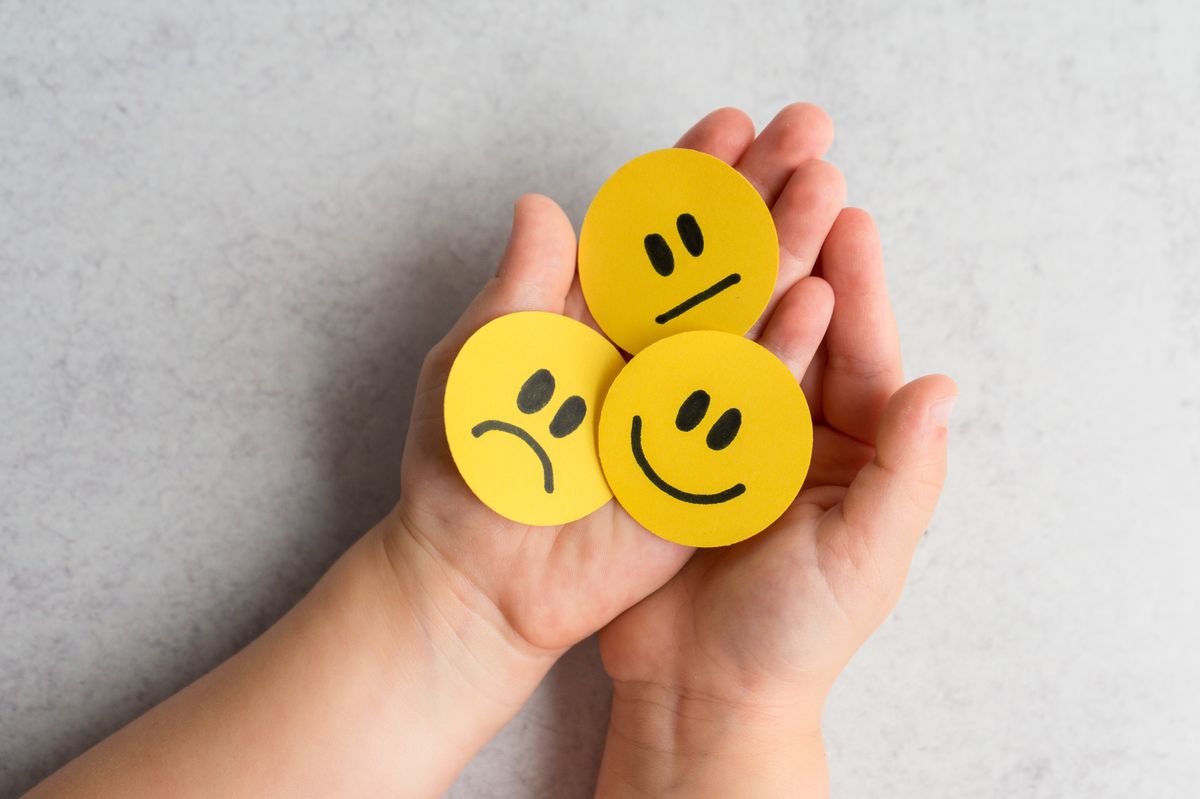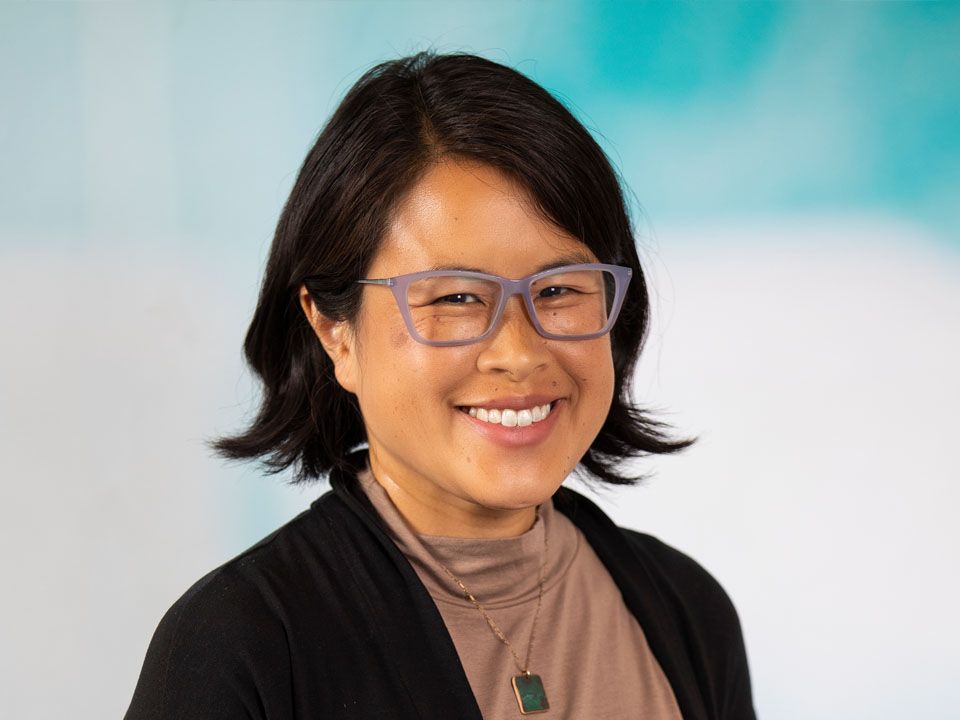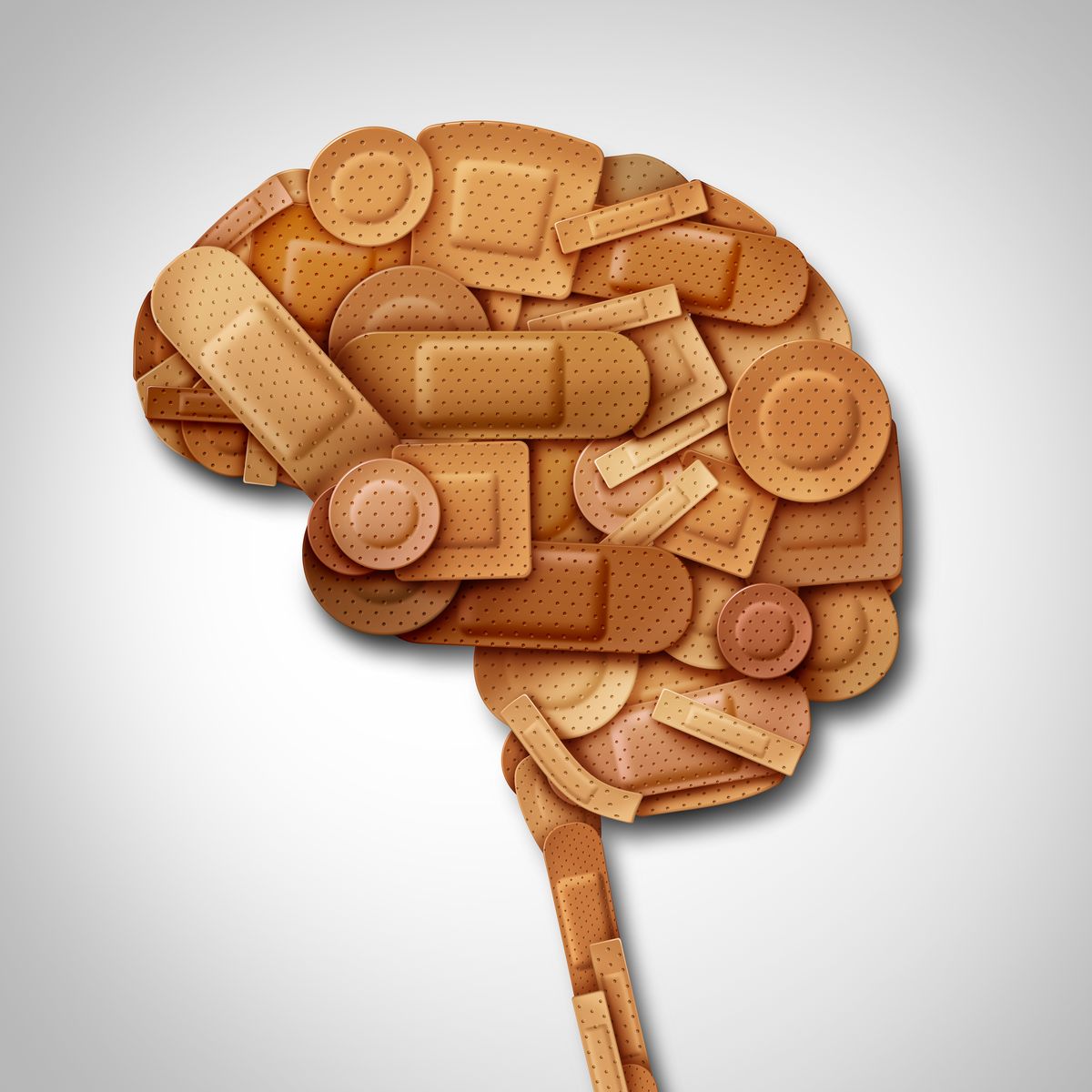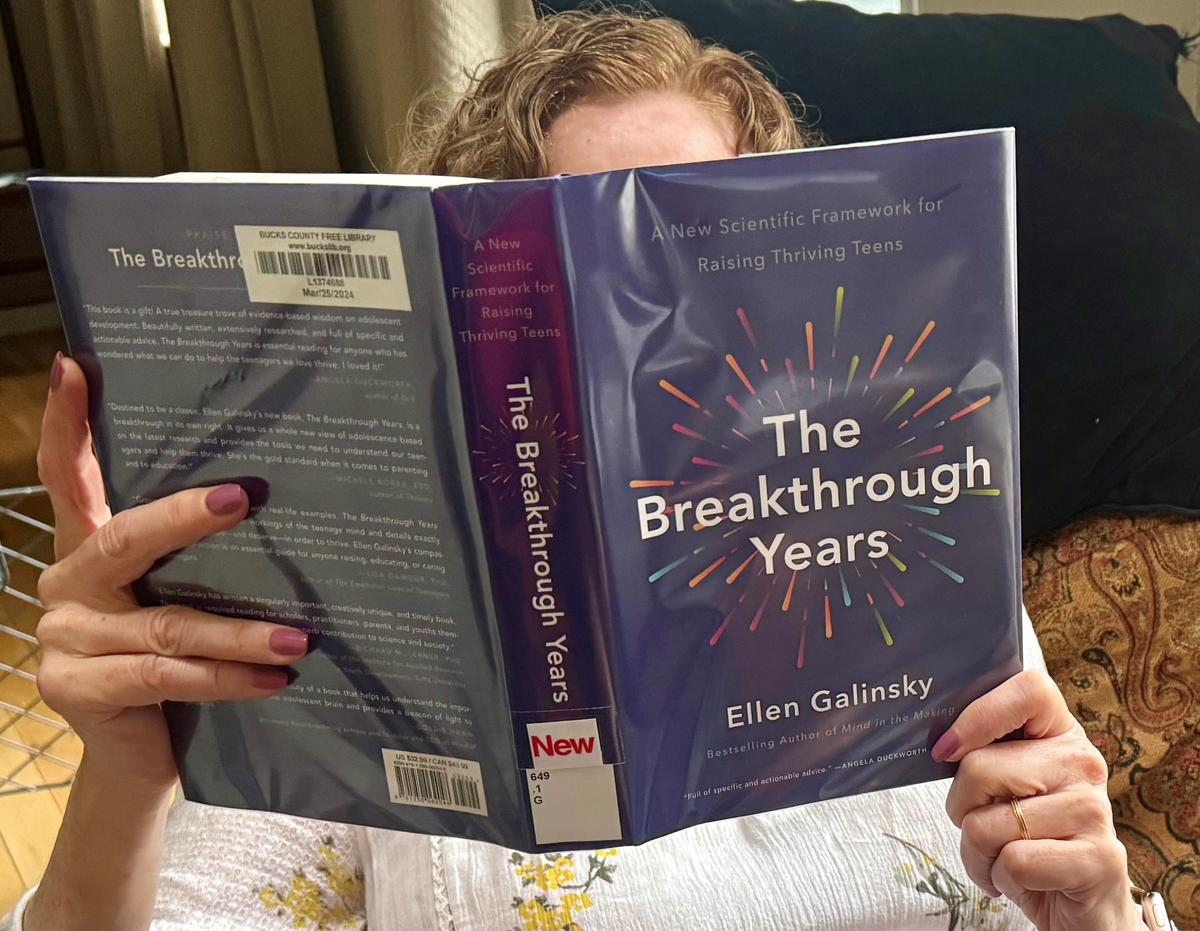👋 Earlier this month, I watched my older son pedal off to middle school, his overstuffed backpack weighing on his shoulders. He was heading toward new classes, new teachers, new friendships — and new pressures. This stage marks a monumental shift for him and his peers. As a parent, my role isn’t just to protect him when possible, but to equip him for the challenges he’ll encounter in the years ahead.
Much of what we do at the Burke Foundation is to try to help families build their children’s health and emotional well-being in those earliest, formative years so they’re better prepared to weather adolescence and beyond. But it’s not only the earliest years that matter. In her thought-provoking recent book, The Breakthrough Years, Families and Work Institute President Ellen Galinsky observes that the pre-teen and teen years are second only to the First 1,000 Days in the number of dramatic changes occurring in the human brain.
Our work shows us that this developmental period can be even harder for kids who live in lower-resourced communities, face racism, or don’t fit into the societal boxes that so often shape adolescent life.
So, as the new school year begins, this issue of Starting Early focuses on the mental health challenges facing children, adolescents, and their caregivers. We also speak with my friend Dr. Ron-Li Liaw, Mental Health In-Chief at Children’s Hospital Colorado, about the very real challenges facing families, and how we can more effectively address them.
Atiya Weiss
Executive Director, the Burke Foundation
1 big thing: Kids and the growing mental health crisis

The headlines are harrowing: Children’s mental health has declined steadily for a decade, especially in the adolescent years. The pandemic was a key contributor to mental health challenges for many young people, and it also shed light on the anxiety, loneliness, and despair that were worsening pre-pandemic and persist in its aftermath.
In grades 9-12 — from 2013 to 2023 — there were increases in students’ experiences of violence, signs of poor mental health, and suicidal thoughts and behaviors, according to the Centers for Disease Control’s biennial Youth Risk Behavior Survey (YRBS) — the preeminent review of behavior.
The challenges were greatest for girls, Black students, and LGBTQ+ youth.
Social media is a key factor: Dr. Kathleen Ethier, director of the Division of Adolescent and School Health at the CDC, points to the many ways social media — and smartphone use — can disrupt daily life and undermine well-being. She says they:
- Disrupt social connections, serving as a substitute for in-person socializing
- Disturb sleep — kids often stay up late scrolling in bed
- Keep kids from such beneficial activities as exercise, school clubs, youth groups, and volunteerism
- Provide a forum for bullies to prey on peers without consequences
- Warp children’s sense of self — especially girls’ body image
Parents feel it too: Children’s struggles often play out in increased stress on parents. In fact, 48% of parents say most days their stress is completely overwhelming, compared with 26% of other adults.
U.S. Surgeon General Vivek H. Murthy highlighted this health crisis for parents in a New York Times op-ed.
There has been incremental progress: Some improvements were seen in youth mental health from 2021 to 2023:
- Fewer students experienced persistent feelings of sadness or hopelessness.
- Many groups, such as Black, Hispanic, and female students saw a decline in attempted suicide.
Dr. Ethier at the CDC credits efforts by schools and communities to raise awareness and make more services available as the pandemic brought so much attention to declining mental health in children. “We are definitely not out of the crisis in youth mental health,” she says, “but the data suggest that when we come together and focus on an issue that has been a problem since before the pandemic, we can make progress…We can provide environments for young people that support them; we can get them connected to the services they need.”
2. Exploring youth mental health with Dr. K. Ron-Li Liaw, Mental Health In-Chief, Children’s Hospital Colorado

A child psychiatrist based in New York, Dr. Liaw was drawn to the new role of Mental Health In-Chief when Children’s Hospital Colorado declared a pediatric mental health state of emergency. She oversees a huge team of professionals focused on the mental and emotional well-being of children and their families. Following is a condensed version of our interview with Dr. Liaw. Don’t miss the full interview.
Why do you need a Mental Health In-Chief?
When I started as the Mental Health In-Chief in Colorado, more than 50% of the kids in our trauma Level One emergency department from this region were coming in after suicide attempts, significant trauma exposure, exacerbations of mental health conditions, and substance abuse. We wanted to elevate mental health and make sure there would be clinical expertise and experience at every table where we’d be making hard mental health-related decisions — whether at the hospital, the academic health sciences campus, or in the community. We’re cognizant that we’re sitting close to where the Aurora movie theater shooting and Columbine happened, and there’s the palpable impact, footprint, and legacy of trauma and gun violence and unmet mental health needs.
It’s about identifying how to close the care gaps with the help of community, state, and national partners.
What do you see as the role of our society in supporting youth mental health?
One necessary shift in thinking is understanding that so much of what it takes to support youth and families doesn’t occur within the hospital walls. Mental health support and preventive interventions have to become better integrated in primary care, in schools, in early childhood and learning environments, in workplaces, and in communities. But because we have an atrocious mental health workforce supply and demand gap, we’re never going to meet the needs of the approximately 8 in 10 kids in rural communities who are facing mental health challenges and have no access to broadband for telehealth, let alone primary care or specialty mental healthcare.
What are some models you’ve encountered across the country that are working to support youth mental health?
I’d love to shine a light back on you in New Jersey, which was to build a children’s system of care that not only focused on crisis and downstream effects of mental health conditions and challenges, but also in upstream prevention.
Ohio Rise provides wraparound services for the most vulnerable, complex kids and families who are struggling with social determinants of health and health-related social needs.
The Texas Consortium has taken tragic events like the school shootings in Santa Fe and Uvalde into account and they’re making massive investments into the child mental health workforce, into primary care integration, and into school telehealth consultations, along with the data analytics to track outcomes across the entire state.
New York City and Denver have robust mental health systems within their public schools. They have school-based health centers that are a 1-stop shop for preventive care, well-child visits, sick visits, immunizations, and mental healthcare.
We also have an incredible school partnership model in Durango, Colorado, a rural area in the southwestern part of our state. Our mental health team here at the University of Colorado and Children’s Hospital Colorado provide comprehensive evaluations, treatment recommendations, and supports for students referred to a mental health hub in Durango, launched by local pediatricians and school district champions. As part of this effort, our child psychiatry and psychology faculty also train students and fellows to enhance our rural mental health workforce. The trainees go to Durango several times a year to get to know the school and the community, and many of them end up working in rural settings after that because they’ve had this rich learning experience.
There are many amazing projects and investments, but they’re occurring in silos. There’s no national youth mental health plan. There’s no universal access to a host of services that all children and families can easily access and deserve.
What advice do you have for parents or caregivers seeing emerging mental health issues in their kids?
To start, you want to pay attention to your kid and get to know their unique strengths, their personalities, how they communicate, how they handle big emotions, stress, and change.
And if you notice that something’s not right, you want to check in with and have a conversation with your child. Don’t be afraid to just open a conversation and listen, listen, listen and validate, validate, validate before you jump to problem-solving mode. You can say, “This must be hard. Tell me more. How can I help?”
As parents, we don’t get a playbook. So, you need to go to the places you trust and seek help like your primary care provider or pediatrician or school counselor. Sometimes your workplace can offer support. We always say in medicine, “Don’t worry alone.”
Sometimes it’s less about what we say, but how we act. We should remember that we can be and are important role models for our kids.
3. One smile to go: Mental Health First Aid

Young people come into contact with a wide range of adults every day — from parents to teachers to coaches to lunchroom staff. Those adults are well-positioned to support a child struggling with mental health but might not know what to do.
Mental Health First Aid is an 8-hour training to help adults recognize and respond to signs and symptoms of mental health and substance use challenges.
The F.M. Kirby Foundation is funding up to 45 trainings for groups all over Morris County, NJ, to grow their knowledge of signs, symptoms, and risk factors of mental illnesses and increase their confidence in helping someone in distress. Foundation President Justin Kiczek believes strongly in its potential and participated in the training which is available to organizations that have regular contact with youth, including schools, libraries, sports teams, and youth groups.
“There were very helpful, concrete actions to take and they taught you to understand, ‘when is it just someone who needs someone to listen? When do you have to suggest someone gets help? And when do you have to call someone like the 988 Suicide & Crisis Lifeline?’” says Kiczek.
“I also developed better tools to talk to my own kids when they were feeling down,” he adds. “When my kids were struggling, my go-to was ‘Oh, it’s not that bad. I’m sure the teacher didn’t mean that.’ Or ‘I’m sure you’ll get over it.’ I learned that minimizing doesn’t help. But what helps, is instead being supportive and saying, ‘That sounds really hard. How can I help or to give them a choice? Do you want a hug? Do you want me to say something? Do you want me to just listen?’” 💕
4. What we’re reading 📖

In The Breakthrough Years, Ellen Galinsky, president of the Families and Work Institute, digs into the complex time when adolescent brains go through dramatic growth as they prepare kids to leave the nest.
Why it matters: Adolescents’ brains are not “advanced” child brains, nor are they “immature” adult brains. They are specially tailored to meet this stage of life.
“Adolescence is a time when young people are learning to move in the world for themselves,” she writes. “They must build relationships with increasing numbers of people beyond their families.” This requires them to be extremely sensitive to social and emotional situations – making them more reactive, and susceptible to slights, bullying, and peer approval. The resulting strong emotions are a developmental necessity. And the more kids use their brains to navigate complex and unfamiliar social situations, the better they get at regulating their emotions and understanding their world.
It’s also a risky time for teens who haven’t developed the skills or gotten the support to learn positive coping strategies.
Advice for caregivers: Master the balance between allowing kids the latitude to learn and putting in guardrails to protect them from harm and adapt your communications:
- Listen more than you talk.
- Listen with your when-I-was-a-child mind not just your now-I’m-an-adult mind.
- Create a family problem-solving process where the adolescent has a voice.
Bottom Line: Adolescence isn’t just a time of great physical change for young people. It’s also a time of dynamic brain growth and change designed to prepare them for independence.
The roundup
- Helping NJ youth: The New Jersey Department of Children and Families recently released 2NDFLOOR, a 24/7 mental health support app specifically designed for New Jersey youth that offers 1-on-1 chat capability, a helpline, community conversations, and more.
- Empowering parents: Ascend at the Aspen Institute released Ascending with Parents: A Guide to Centering Parent Voice in Policy and Practice, designed to equip organizations serving families that struggle to make ends meet with 2Gen strategies to partner with parents and use their expertise and insights effectively.
- Making a difference: Applications are open for the second class of Solutions Journalism Network’s HEAL Fellows — journalists reporting on, for, and with young people to elevate systemic solutions promoting their mental health.
- Lighting the way: Mental Health America’s 2024 Supporting Young Minds Guides empower parents, caregivers, teachers, and others to provide support by fostering nonjudgmental environments where young people feel safe expressing themselves.
- Building care: New Jersey Maternal and Infant Health Innovation Authority is hiring for several roles in operations, finance, and administration.
